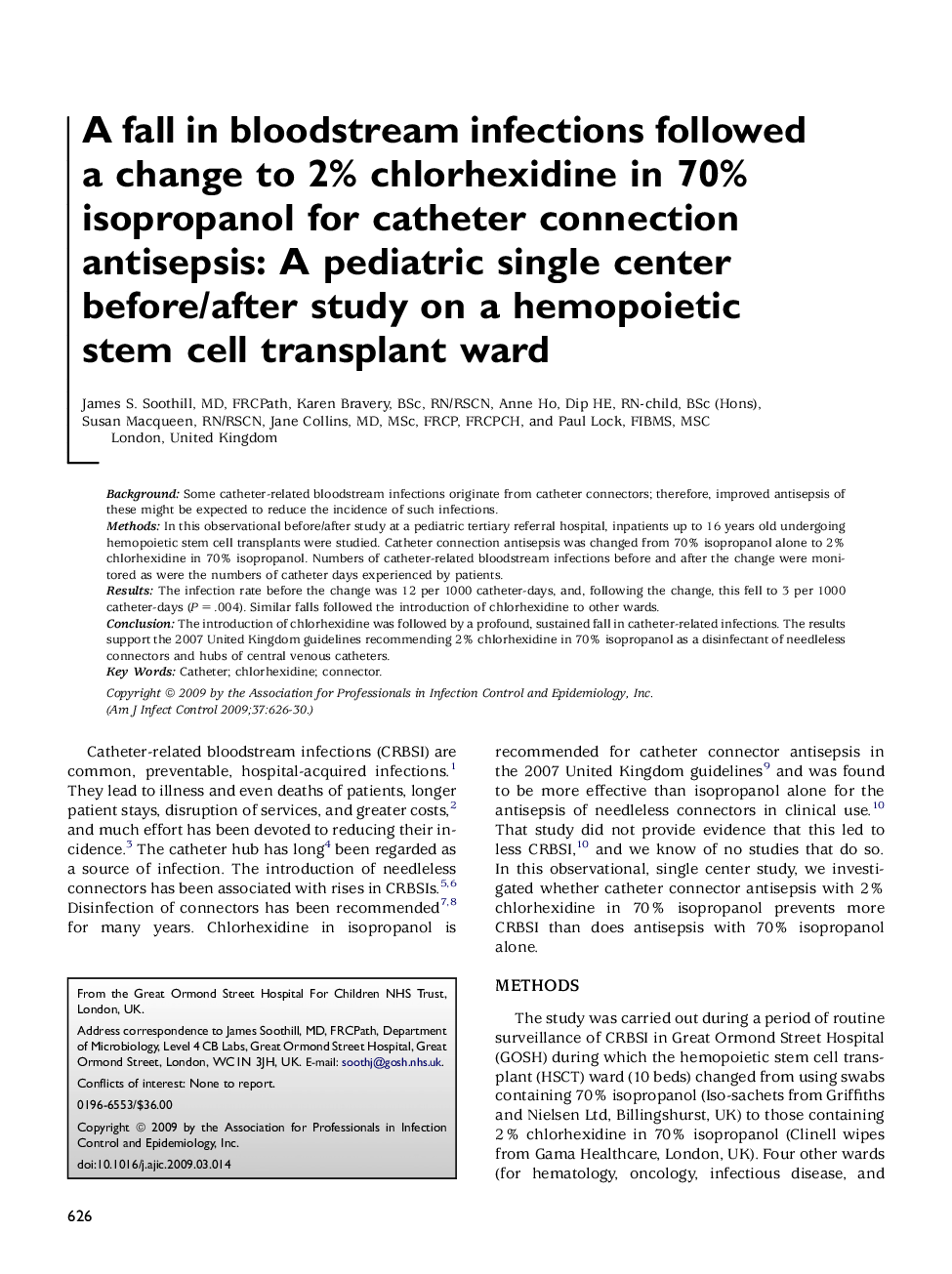| Article ID | Journal | Published Year | Pages | File Type |
|---|---|---|---|---|
| 2638448 | American Journal of Infection Control | 2009 | 5 Pages |
BackgroundSome catheter-related bloodstream infections originate from catheter connectors; therefore, improved antisepsis of these might be expected to reduce the incidence of such infections.MethodsIn this observational before/after study at a pediatric tertiary referral hospital, inpatients up to 16 years old undergoing hemopoietic stem cell transplants were studied. Catheter connection antisepsis was changed from 70% isopropanol alone to 2% chlorhexidine in 70% isopropanol. Numbers of catheter-related bloodstream infections before and after the change were monitored as were the numbers of catheter days experienced by patients.ResultsThe infection rate before the change was 12 per 1000 catheter-days, and, following the change, this fell to 3 per 1000 catheter-days (P = .004). Similar falls followed the introduction of chlorhexidine to other wards.ConclusionThe introduction of chlorhexidine was followed by a profound, sustained fall in catheter-related infections. The results support the 2007 United Kingdom guidelines recommending 2% chlorhexidine in 70% isopropanol as a disinfectant of needleless connectors and hubs of central venous catheters.
